
Jerusalem, Israel’s most famous city, is holy to more than half the people in the world. In this ABC tour of Israel, you’ll learn all about the wonders of this ancient land.
Material appropriate for primary age groups

Jerusalem, Israel’s most famous city, is holy to more than half the people in the world. In this ABC tour of Israel, you’ll learn all about the wonders of this ancient land.
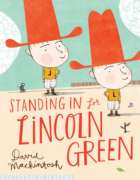
Lincoln has a double, You Know Who, to do all of his unpleasant tasks while Lincoln sleeps, plays, or visits his best friend, but when You Know Who makes a friend of his own, Lincoln is in big trouble.
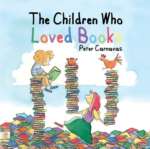
Angus and Lucy love books. They have hundreds of them. Then one day, all the books are taken away, and Angus and Lucy discover they need books more than they ever imagined. A warm and moving celebration of books and the way in which they bring us all together.
 9-year-old Gabe (Gabriella) Murray lives and breathes hockey. She’s the youngest player on her new team, she has a nifty move that her teammates call “the Gabe,” and she shares a lucky number with her hero, Hayley Wickenheiser: number 22. But when her coach hands out the team jerseys, Gabe is stuck with number 9. Crushed, Gabe wants to give up hockey altogether. How can she play without her lucky number? Gabe’s grandmother soon sets her straight, though–from her own connection to the number 9 in her hockey-playing days to all the greats she cheered for who wore it, she soon convinces Gabe that this new number might not be so bad after all.
9-year-old Gabe (Gabriella) Murray lives and breathes hockey. She’s the youngest player on her new team, she has a nifty move that her teammates call “the Gabe,” and she shares a lucky number with her hero, Hayley Wickenheiser: number 22. But when her coach hands out the team jerseys, Gabe is stuck with number 9. Crushed, Gabe wants to give up hockey altogether. How can she play without her lucky number? Gabe’s grandmother soon sets her straight, though–from her own connection to the number 9 in her hockey-playing days to all the greats she cheered for who wore it, she soon convinces Gabe that this new number might not be so bad after all.
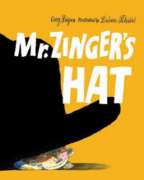
When Mr. Zinger’s hat flies in and interrupts Leo’s playing, the two of them construct a story as to how exactly the hat took off.
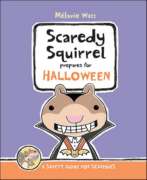
A quirky safety guide combines practical tips with step-by-step instructions featuring an anxious Scaredy Squirrel, who prepares himself for the worst during the spookiest night of the year.
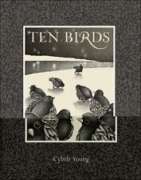
After wandering down a hall and discovering a scattered assortment of clothes, ten birds were shocked to spot a scary monster! What were they to do? Grabbing a piece of clothing as a disguise, ?the first bird, always inventive, became a Vicious Polka-dactyl. But the monster didn’t budge.? So the second bird, then the third bird, and so on, followed in turn, each adding some clothing to the mix to devise a new, frightening creature. But no matter that the birds were ?resourceful,? ?attentive,? ?creative? and ?eager to participate,? or that they created fantastically scary beings such as a Gnashing Grapplesaurus, a Bristling Fang-Mangler and a Slimy Long-toed Zapper — the monster would not be chased away. Until the tenth bird stepped forward, the one who was ?always easily distracted.? Could this be the bird who finally, and surprisingly, saved the day?
This gorgeous picture book by award-winning author-illustrator Cybèle Young is perfect for counting and early numeracy lessons. Each of the numbers from one to ten gets its own spread, featuring two pieces of intricately detailed pen-and-ink illustrations. The smaller illustration incorporates the numeral into the drawing itself, while the larger one offers the opportunity to search for and count all the birds within the growing clothes monster. Filled with silliness, suspense and a terrific reveal at the end, this clever, funny story is also a wonderful read-aloud. It highlights how individual resourcefulness and creativity are magnified by the power of cooperation and teamwork.
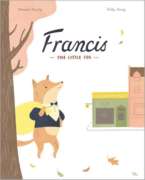
Francis the fox enjoys everything about his Saturdays at Mr. Li’s Laundromat, except for Mr. Li’s granddaughter, Lily. When Lily plays a dirty trick on Francis, it’s up to the little fox to clean up and save the day.
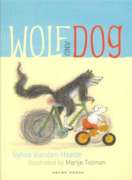
Shares the adventures of canine cousins, Dog and Wolf, who live very different lives but continue to get each other into mischief.
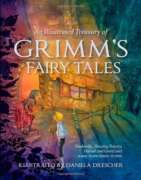
Two hundred years ago, the Brothers Grimm published their famous collection of folk tales, including these thirty much-loved stories of helpful elves; giants who can see into the next land; foolish but goodhearted lads; princesses with golden hair; faithful servants and wicked queens.
This sumptuously illustrated collection of essential Grimm classics includes stories every childhood needs: ‘The Princess and the Frog’, ‘Little Red Riding Hood’, ‘Sleeping Beauty’, ‘Cinderella’, ‘Rumpelstiltskin’ and dozens more.